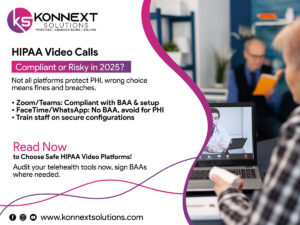HCC risk adjustment in 2025 is more than just a compliance checkbox – it’s a strategic driver of revenue and regulatory resilience. With CMS’s hybrid model blending elements of the 2020 and 2024 HCC frameworks, risk adjustment medical coders, compliance teams, and clinical leaders now face a complex landscape where outdated codes vanish, specificity rules, and audits loom large.
But with the right tools and strategy, complexity becomes opportunity.
In this blog, we unpack advanced HCC risk adjustment coding strategies—from dual-model mapping to prospective workflows—that will help you boost reimbursements, stay audit-ready, and remain compliant through payment year 2026 and beyond.
Understanding CMS’ 2025 Hybrid HCC Risk Adjustment Model
Think of CMS’s 2025 model as a two-lane highway:
- 33%of risk scores still use the 2020 CMS-HCC model
- 67%now follow the newer, more specific 2024 CMS-HCC (v28) model
By 2026, CMS will complete the transition to v28, removing over 2,000 legacy codes. This year, CMS also applied a 5.9% normalization factor to adjust for coding intensity differences between Medicare Advantage and Fee-for-Service—putting even more pressure on organizations to code accurately.
If you’re not adapting, you’re at risk of:
- Underpayments
- Failed audits
- Regulatory penalties
Why HCC Risk Adjustment Accuracy Matters in 2025
With margins tighter and audit scrutiny higher than ever, every diagnosis matters:
| Area | Risk | Impact |
| Financial | Incomplete coding | Lower RAF scores and missed revenue |
| Audits | Vague documentation | More RADV findings, higher clawbacks |
| Compliance | Weak MEAT adherence | Increased vulnerability under OIG reviews |
The MEAT criteria—Monitor, Evaluate, Assess, Treat—remain the benchmark. If documentation doesn’t support each element, CMS won’t pay for the diagnosis.
Advanced HCC Risk Adjustment Coding Techniques
-
Dual-Model HCC Coding
Coders must now fluently “speak” both the 2020 and 2024 models.
Action Plan:
- Cross-map ICD-10 codes to both models
- Identify diagnoses that drop offin v28 (e.g., some hematologic disorders)
- Code with high specificity—general terms won’t qualify under v28
Example:
“Diabetes with CKD” must be explicitly documented as “Type 2 Diabetes Mellitus with Stage 3 CKD” to qualify under HCC 18 in v28.2
2. Prospective Risk Adjustment Workflows
Shift from reactive to proactive coding.
How it works:
- Pre-visit gap analysis identifies missing conditions
- Real-time EHR prompts flag suspected diagnoses
- Providers address gaps during the encounter
Result:
Improved RAF scores, fewer retrospective corrections, and reduced audit exposure.
3. Coders as Compliance Enforcers
Risk adjustment medical coders now serve as the first line of defense.
Equip your team with:
- Monthly MEAT audits
- Performance dashboards to track RAF trends and closure rates
- Training on CMS-HCC v28 and ICD-10 documentation nuances
When coders identify and fix documentation issues before submission, you avoid CMS penalties after.
Risk Adjustment Coding Challenges and Solutions
| Challenge | Impact | Solution |
| Incomplete Documentation | 40% of audit denials stem from vague notes | Provider education & real-time support |
| Data Fragmentation | Missed diagnoses | Integrate EHR + claims with predictive analytics |
| Staffing Gaps | Certified coder shortages | Partner with Konnext Solutions for scalable expertise |
| Audit Risk | Rising RADV & OIG penalties | Mock audits + airtight documentation workflows |
Why Konnext Solutions Is the Right Partner in 2025
At Konnext Solutions, we deliver end-to-end HCC risk adjustment support designed specifically for the demands of 2025’s hybrid model.
Our edge:
- Certified coders fluent in both CMS-HCC 2020 & 2024 frameworks
- Pre-visit gap closure tools & real-time documentation workflows
- RADV audit-ready processes aligned with MEAT standards
- Provider education programs that improve documentation quality
Impact:
Clients see up to a 35% drop in audit findings and consistently higher RAF scores when they work with Konnext Solutions.
What’s Next After 2025?
Looking toward payment year 2026 and beyond, CMS is moving fast:
- Full v28 implementationwill eliminate legacy code reliance
- SDOH codeslike Z59.0 (homelessness) will play a larger role
- ICD-11adoption may reshape U.S. coding in the next decade
Now’s the time to scale your coding strategy and future-proof your compliance.
Final Takeaway: Coders Who Adapt, Win Big
In 2025, HCC risk adjustment isn’t just about ticking boxes. It’s about leading with accuracy, staying ahead of audits, and unlocking maximum reimbursement through smarter workflows.
- Dual-model coding
- Prospective gap closure
- Real-time documentation guidance
- Ongoing coder and provider training
Need help navigating CMS’s hybrid era?
Partner with Konnext Solutions. Our experts will transform your HCC risk adjustment program into a revenue-boosting, audit-ready engine.




